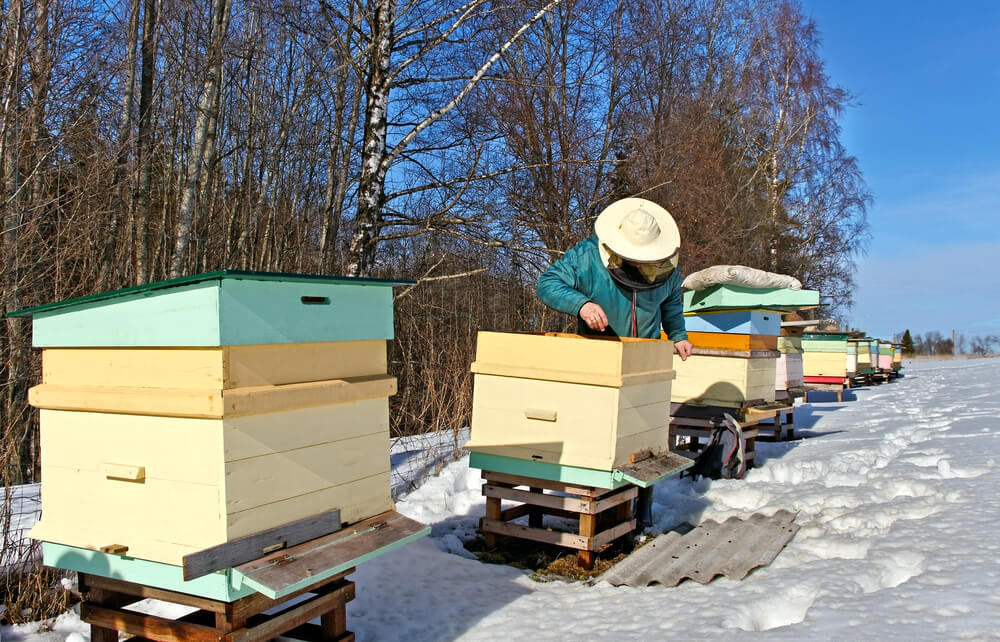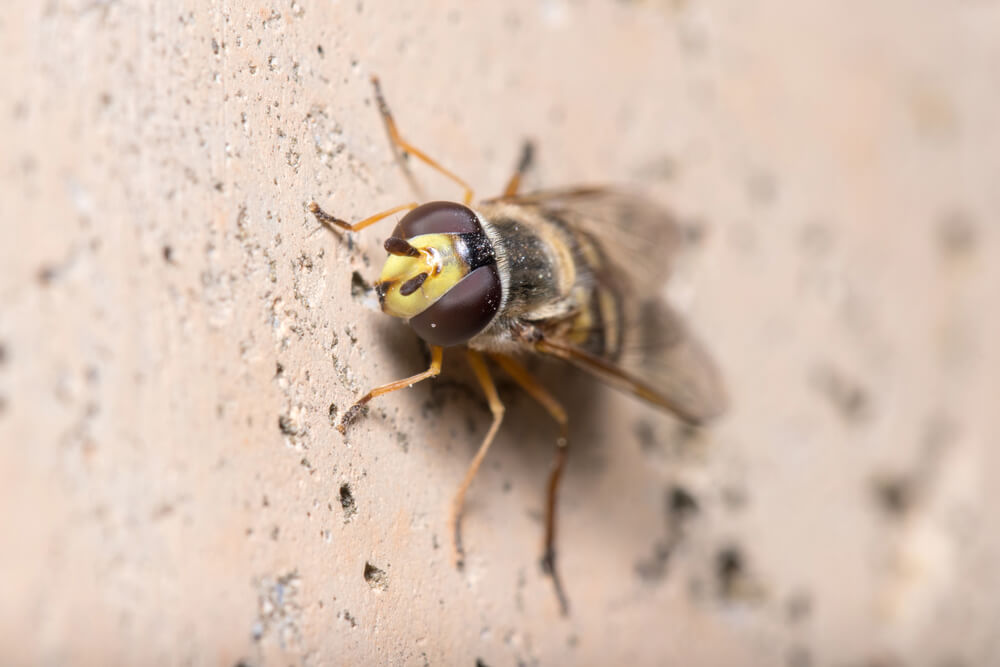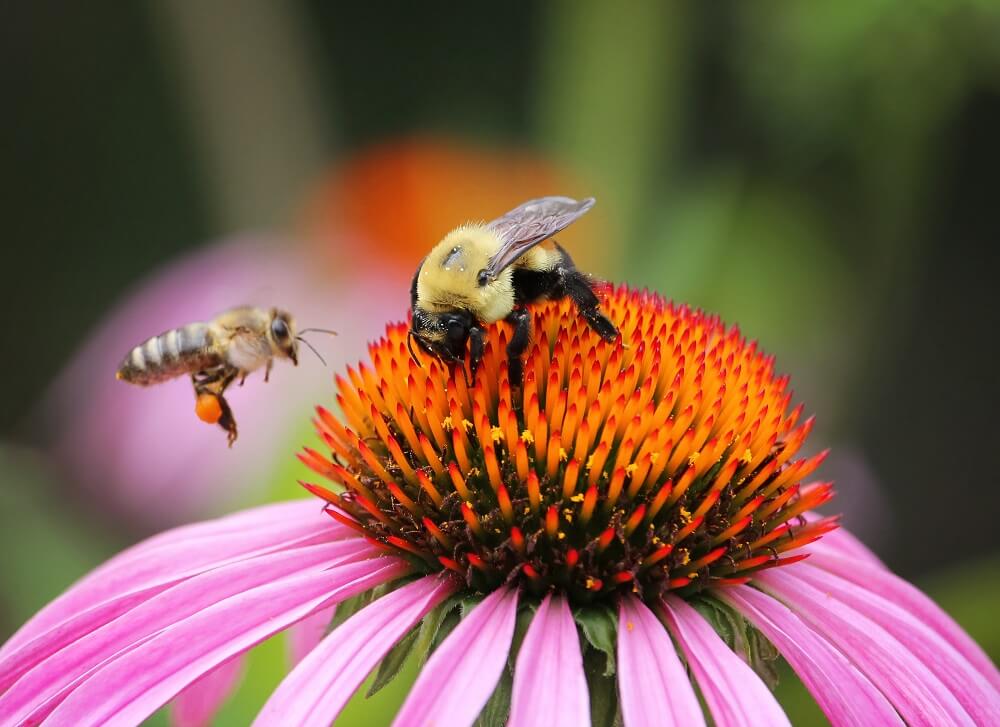Table of Contents:
Do Beehives Die in the Winter?
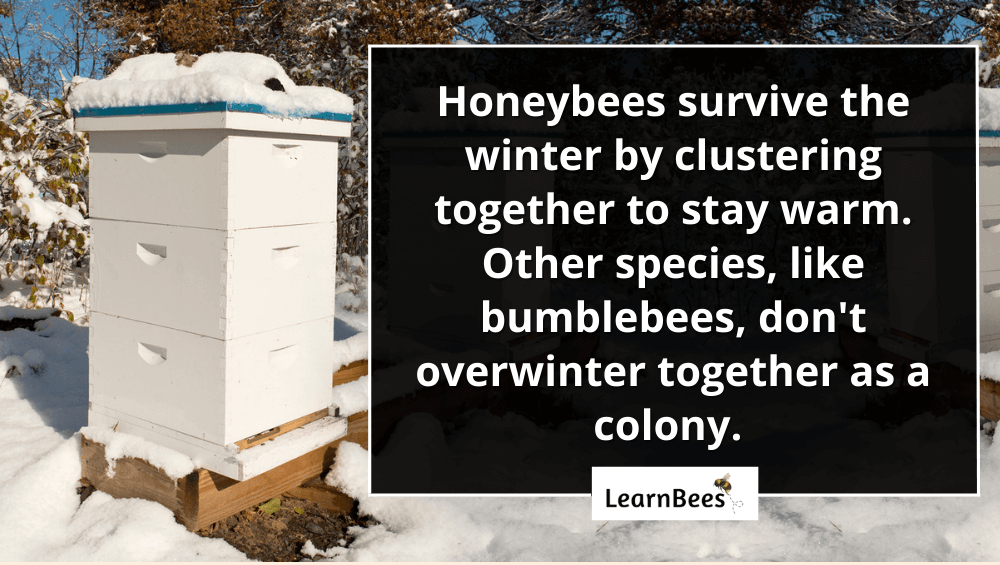
Short answer:
It depends on the bee species.
For example, honeybees survive the winter by huddling together in a cluster around the queen bee. This keeps them warm and conserves energy when temperatures dip below 55° F. For food, honeybees will eat the stored honey they made during the spring and summer.
As for other bee species?
Many of them die in the winter.
Bumblebee colonies, for example, don’t overwinter inside the hive like honeybees do. Instead, the worker and drone bumblebees will die off by the late fall. This leaves behind the queen bumblebees, who survive the winter by hibernating.
Remember:
Bees are cold-blooded creatures.
This means their body temperature is basically the same as their surroundings. As such, a bee flying in 70° F weather will have a body temperature near 70° F. The same bee flying in 85° F weather will have a body temperature near 85° F.
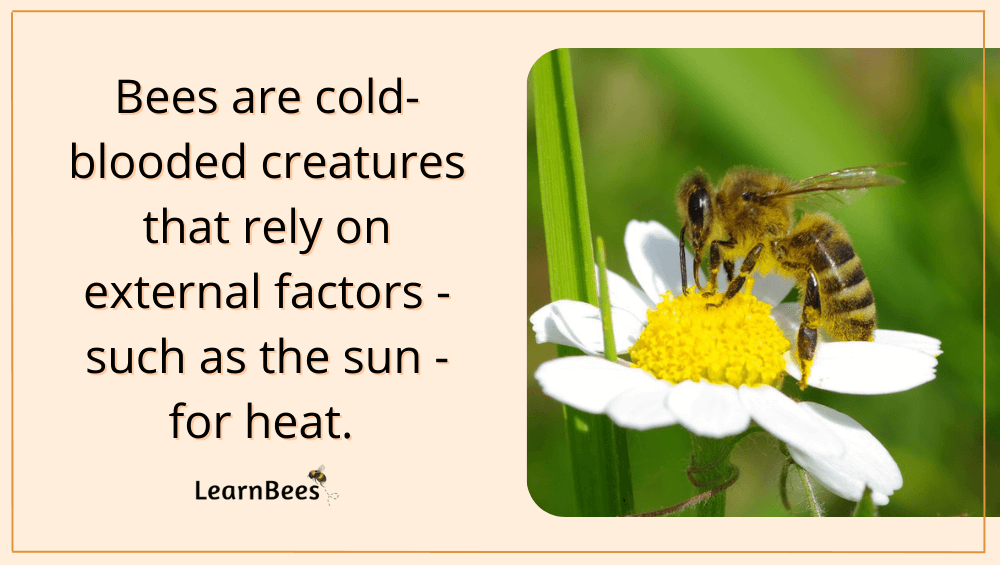
Bees rely on external factors, such as the sun, to keep them warm. During the winter, honeybees will form tight clusters to maintain a hive temperature of about 97° F.
That said, not all honeybee hives survive the winter.
How come?
Here are the top three reasons beehives die in the winter:
- The hive is too weak going into the winter. This includes small hives without enough bees, or hives infested with varroa mites, small hive beetles, or wax moths.
- The hive doesn’t have enough honey stored. Bees rely on honey for food when flowers are scarce during the winter. As such, hives should have plenty of honey to last during cold months.
- There is too much moisture inside the hive. Condensation can build up in the hive, causing cold water to get on the bees.
So now the question becomes…
How Do I Keep My Beehive Warm in the Winter?

Beekeepers call this ‘winterizing a beehive.’
There are many ways to winterize your hive, depending on your conditions. For instance, someone in Georgia will have different winterizing techniques than someone in South Dakota.
But here’s the critical part:
You won’t learn how to winterize a beehive from one article. You should read books, watch YouTube videos, and talk to other beekeepers in your area for more tips.
Winterizing your hive depends on your hive type and climate. I cannot emphasize that enough.
With that in mind, here are a few general winterizing tips:
Tip 1: Check the Colony’s Health
- Check the size of your colonies and combine small ones. When spring comes, it’s better to have one surviving colony than two dead ones.
- Look for a queen that is laying eggs. You will likely see some brood in your hive. If you don’t see brood, try to spot your queen to ensure she’s alive and well. If you can’t find her or see no signs of her, combine two colonies or order a new queen.
- Look for and treat mites and small hive beetles
Tip 2: Make Sure They Have Enough Honey
- If your hives are too light, it’s time to give them that saved honey you reserved just for them. If you don’t have enough honey saved, you’ll need to feed them sugar syrup.
- Hard sugar needs to be fed once the sugar syrup temperature (not the air) falls around 50° F. These are known as candy boards.
- Honey frames should be surrounding the bee cluster in a Langstroth hive. They should be on both sides of the cluster and above it, so move frames around if needed. This allows the colony to get food easily.
Tip 3: Get the Hive Situated
- Empty bee boxes should be removed. Make sure the space inside the hive is the right size for the colony. A correct interior size reduces the chances of cold drafts and deters intruders.
- Place a slatted rack in your hive. The slatted rack adds space between the drafty hive opening and the bottom of the cluster.
- Remove queen excluders so the bees can move freely inside the hive.
- Reduce hive entrances to deter mice, shrews, or other small creatures from trying to get inside the hive to steal honey. Try putting a mouse guard over the entrance.
- Cover ventilation ports with smaller screening to prevent other intruding insects like spiders.
Tip 4: Proper Ventilation is Important
- Air needs to come through the bottom and out the top. Moderate ventilation helps improve air quality, reduce carbon dioxide build-up, keep the interior dry, and reduce the likelihood of mold and mildew.
- If your winter weather isn’t too extreme, consider using a screened bottom board all winter long.
- If your winter climate isn’t too harsh, you may also want to give your bees a small upper entrance. Moist air will be released from the opening, and the bees can easily take cleansing flights on warmer days.
- Consider using a ventilated gabled roof or a ventilated inner cover to keep the hive dry inside.
FAQs on “Do Beehives Die in the Winter?”
- Can I open my hive in winter?
- What happens to a beehive during the winter?
- At what temperature do bees die?
- How long will a beehive last?
- What causes a beehive to die?
- How do you know if bees are alive in the winter?
- Do bees eat honey in the winter?
- How do I keep my beehive warm in winter?
- How much honey do I put in my hive for winter?
- Should I feed bees in winter?
- Why do bees leave the hive in winter?
- Is it normal to have dead bees outside the hive?
- My bees died over winter, can I harvest the honey?
Can I open my hive in winter?
Yes, if necessary, you can open your hive during the winter. But that doesn’t mean you go opening your hive willy-nilly because you’ll let cold air in. Instead, you’ll want to open your hive when serious problems arise.
For example, if your hive is low on food or infested with disease, then you’ll need open the hive and offer them help.
But many new beekeepers don’t realize this.
So they’ll say something like, “I believe my bees are starving, but it’s too cold to open their hive.”
Or they might also say, “I think my colony is out of food, but I can’t feed them because it’s been raining.”
In these cases, you should open your hive to feed them regardless of the weather.
Why?
Because if your bees are running out of food, they’ll soon die of starvation.
Sure, you’ll lose some bees to the cold and rain by opening the hive quickly and adding food. However, you won’t lose as many as you would if you just allowed the colony to starve to death.
With that said, you should never open a hive in the winter without a plan. Prepare thoroughly by writing down all the steps you’ll need to take. Make sure you have all the equipment handy and review your movements.
The quicker and more efficient you work, the better.
—> Go back to the FAQs on “Do Beehives Die in the Winter?”
More to Explore:
- Do Queen Bees Eat Honey?
- Are Worker Bees Male or Female?
- Queen Bee Versus Worker Bees – How Do They Compare?
What happens to a beehive during the winter?
People often ask, “Can a beehive survive the winter?”
Honeybee hives survive the winter by forming a tight cluster. This keeps them insulated and warm from the cold weather. They take turns moving from the cluster’s center to the outside to keep everyone warm.
However, not all bee species survive the winter. Remember that there are thousands of different types of bees, including carpenter bees, mason bees, and bumblebees.
Many bee colonies die off in the late fall, leaving the queens to hibernate alone until spring.
—> Go back to the FAQs on “Do Beehives Die in the Winter?”
More to Explore:
- Do Carpenter Bees Pollinate?
- How Long Do Bumble Bees Live?
- Honeybees vs. Bumblebees: How Do They Compare?
At what temperature do bees die?
Bees typically become weak and sluggish once temperatures dip below 55° F. They’ll die of hypothermia if their body temperature drops to 45° F or lower.
—> Go back to the FAQs on “Do Beehives Die in the Winter?”
More to Explore:
How long will a beehive last?
It depends on the species of bee.
For instance, honeybee hives can last years or even indefinitely if the conditions are right for them to continue to thrive.
This is because the queen honeybee can lay up to 2,000 eggs per day to replenish any losses and keep the colony at a healthy population. Once the queen bee ages to the point where she isn’t as productive, the worker bees will raise a new queen bee to replace her.
And the cycle continues.
On the other hand, other beehives typically last only one year. For example, bumblebee colonies will die off in the late fall, leaving only the queen behind to hibernate. Once the queen emerges in the spring, she’ll start building a new nest from scratch and laying eggs to build up the colony again.
—> Go back to the FAQs on “Do Beehives Die in the Winter?”
More to Explore:
- Ground Bees: Are They a Threat to Your Yard?
- Wasps vs. Honeybees: Are They Different?
- Do Bumble Bees Bite?
What causes a beehive to die?
“Do beehives die off in winter?” is a common question we get.
Honeybee hives can die during the winter for many reasons. Some of the most common include:
1. Starvation: If the hive doesn’t have enough honey to last them through the winter, they’ll starve to death. This is why it’s essential to ensure your hive has plenty of food before winter sets in.
2. Pests and Diseases: If the hive is infested with pests or diseases, it can weaken them and make them more susceptible to death during the winter.
3. Poor Ventilation: If the hive isn’t well ventilated, it can cause condensation, leading to mold and mildew. This can weaken the bees and make them more susceptible to death during the winter. Too much ventilation can allow cold air to seep in and kill the bees. There must be a balance.
—> Go back to the FAQs on “Do Beehives Die in the Winter?”
More to Explore:
How do you know if bees are alive in the winter?
The easiest way to tell if a beehive is still alive in the winter is to listen for the sound of gentle buzzing from the inside. You should do a “walk around” your hive at least once weekly to check on them.
Additionally, you may notice some dead bees outside the hive on the landing board. This isn’t necessarily a cause for concern since some bees will inevitably die during the winter. Seeing some dead bees on the landing board means the others are doing their job: keeping the hive clean by removing the dead bees.
If you see no dead bees, tap on the hive and listen for a quiet buzz. If everything sounds fine, run a stick through the entrance to ensure it’s clear. If there is a buildup of dead bees behind the reducer, quickly pull it out and remove the piles of dead bees.
Contrastly, if you see dozens of dead bees on the landing board, you should sort through them. Do you see the queen? Are there deformed wings? Any missing heads? Are there other insects mixed in?
Dozens of bees on the landing board could signal a Varroa mite issue. If there are other insect parts, it could mean another insect infestation. Additionally, finding bees with missing heads could mean you have a shrew or vole problem that needs fixing.
—> Go back to the FAQs on “Do Beehives Die in the Winter?”
More to Explore:
Do bees eat honey in the winter?
Yes, honeybees rely on honey during the winter when temperatures are too cold, and flowers are scarce.
—> Go back to the FAQs on “Do Beehives Die in the Winter?”
More to Explore:
How do I keep my beehive warm in winter?
“How do you insulate a beehive for winter?” is a frequent question we get.
There are dozens of ways to do this, depending on your climate. The best thing to do is search for tips on winterizing in your specific area. Watch YouTube videos, read books, and speak to local beekeepers.
—> Go back to the FAQs on “Do Beehives Die in the Winter?”
More to Explore:
How much honey do I put in my hive for winter?
In most climates, we recommend beekeepers leave 80-90 pounds of honey in each hive. This ensures a good supply of natural food for the colony and prevents you from messing around with syrups and sugars.
In warmer climates, we recommend at least 60-70 pounds of honey per hive. Some warm areas of the country can do well with as little as 40 pounds of honey during the winter. However, if you’re unsure, it’s better to allow the bees to have more honey and see how they do. You can always dial it back next winter if necessary.
—> Go back to the FAQs on “Do Beehives Die in the Winter?”
More to Explore:
Should I feed bees in winter?
Ideally, honeybees shouldn’t have to be fed in the winter.
But things happen. And if your bees don’t have enough honey stored, then yes, you should feed them. You don’t want them to die of starvation.
Important note:
Even with plenty of honey in the hive, sometimes bees will starve if they can’t access it.
So start by ensuring the honey frames surround the bee cluster in a Langstroth hive. They should be on both sides of the cluster and above it, so move frames around if needed. This allows the colony to get food easily.
Secondly, never feed bees honey that comes from other hives. This can introduce diseases and infections.
Feed bees a 2:1 white sugar to water mixture in the fall and winter. Two parts white table sugar to one part water. If the temperatures in your climate are below 50°F (10°C), it’s best to use fondant, sugar cakes, or granulated sugar rather than sugar syrup.
Because table sugar doesn’t have the micronutrients found in honey, you can add a feeding stimulant with essential oils for nourishment. For example, Honey-B-Healthy and Pro-Health are two popular products.
—> Go back to the FAQs on “Do Beehives Die in the Winter?”
More to Explore:
Why do bees leave the hive in winter?
The hive will stay in a cluster for most of the winter to keep warm. When temperatures outside rise above 50 °F, bees will leave the hive quickly to relieve themselves of waste. These are called ‘cleansing flights.’
—> Go back to the FAQs on “Do Beehives Die in the Winter?”
More to Explore:
Is it normal to have dead bees outside the hive?
Yes, seeing some dead bees outside the hive is normal. This signals that the other bees are doing their jobs and cleansing the hive of dead bodies. Your colony is probably fine if your cluster is active and has plenty of honey storage.
—> Go back to the FAQs on “Do Beehives Die in the Winter?”
More to Explore:
My bees died over winter, can I harvest the honey?
In most cases, yes – it’s safe to harvest and eat honey from a dead hive. If the honey appears fresh and clean (and hasn’t fermented), then you can eat it. Avoid harvesting and eating honey from colonies recently treated with mites or other chemicals.
